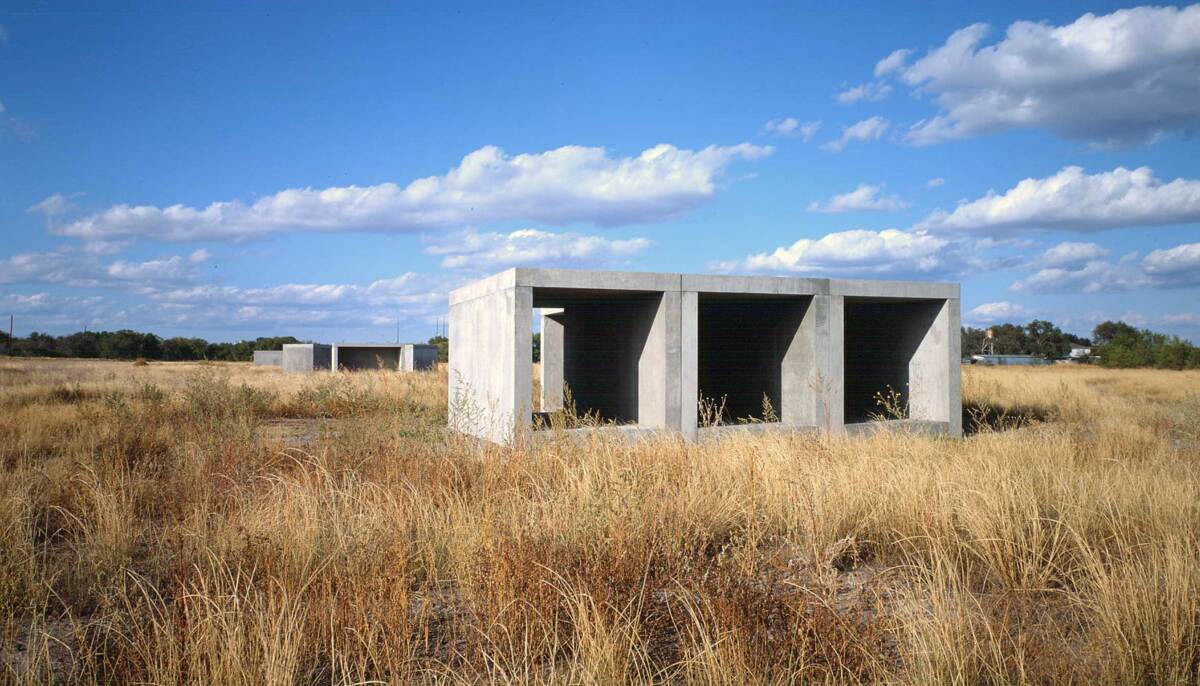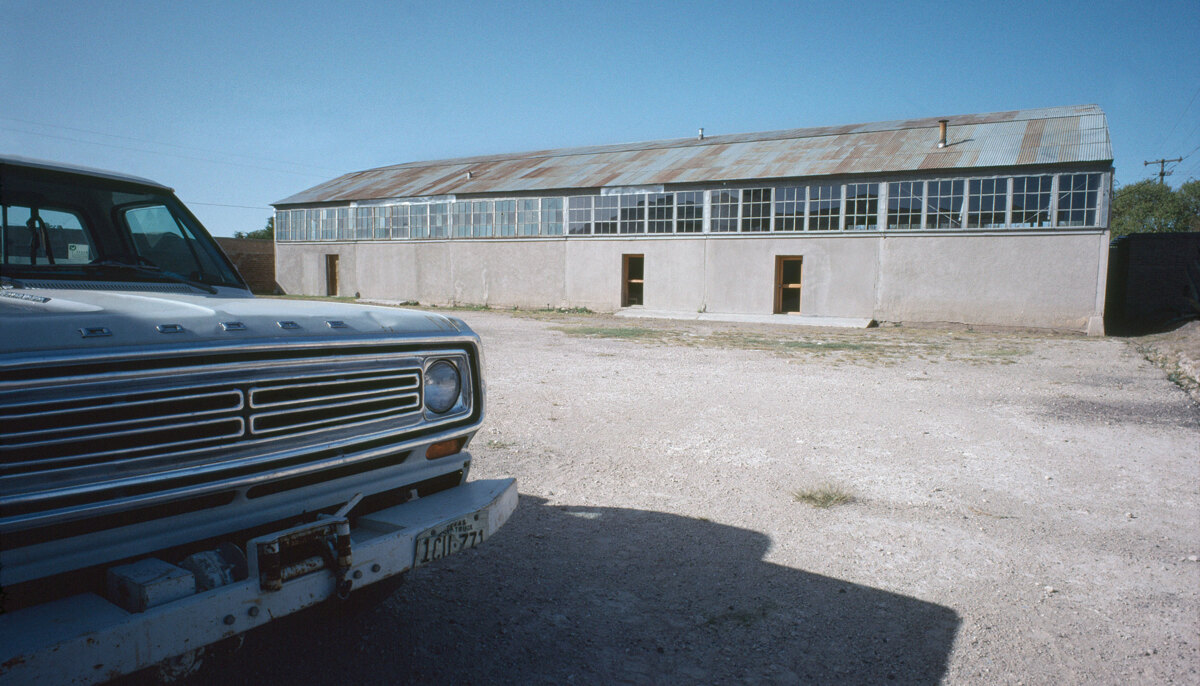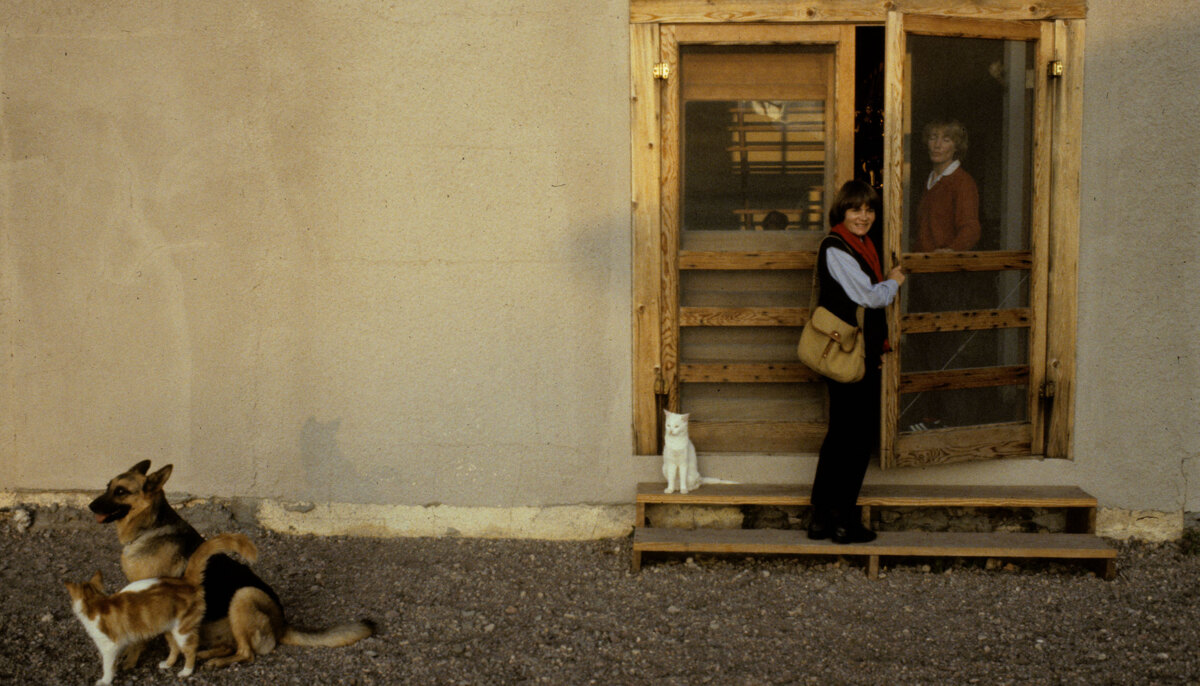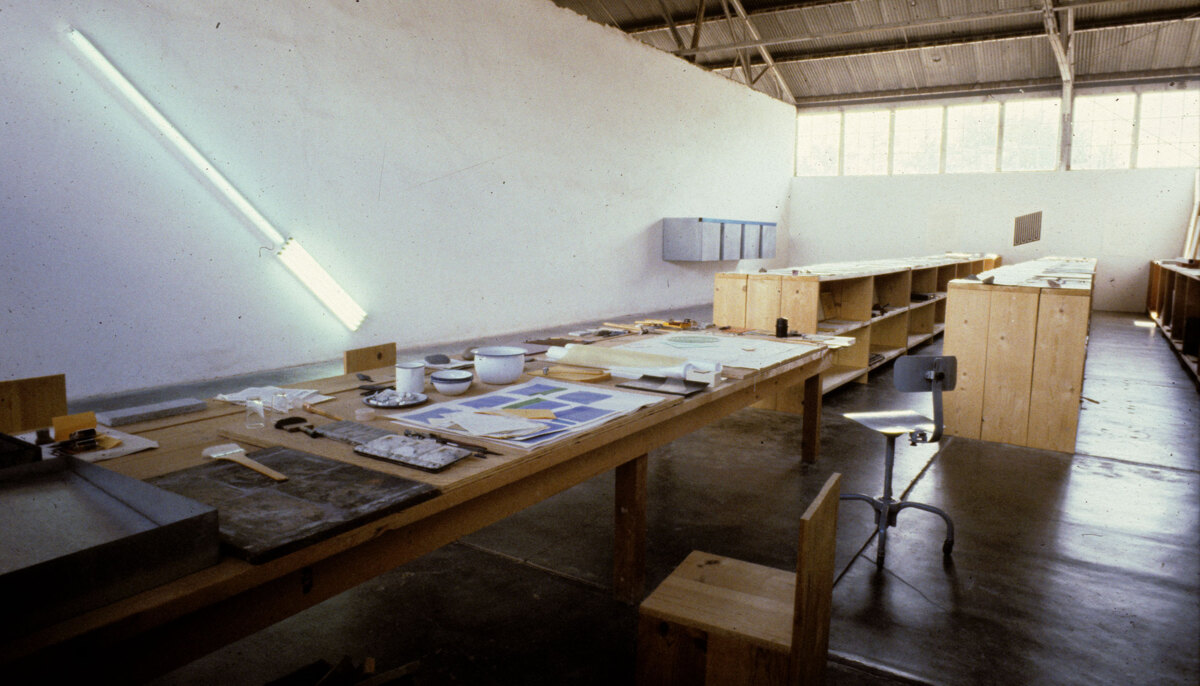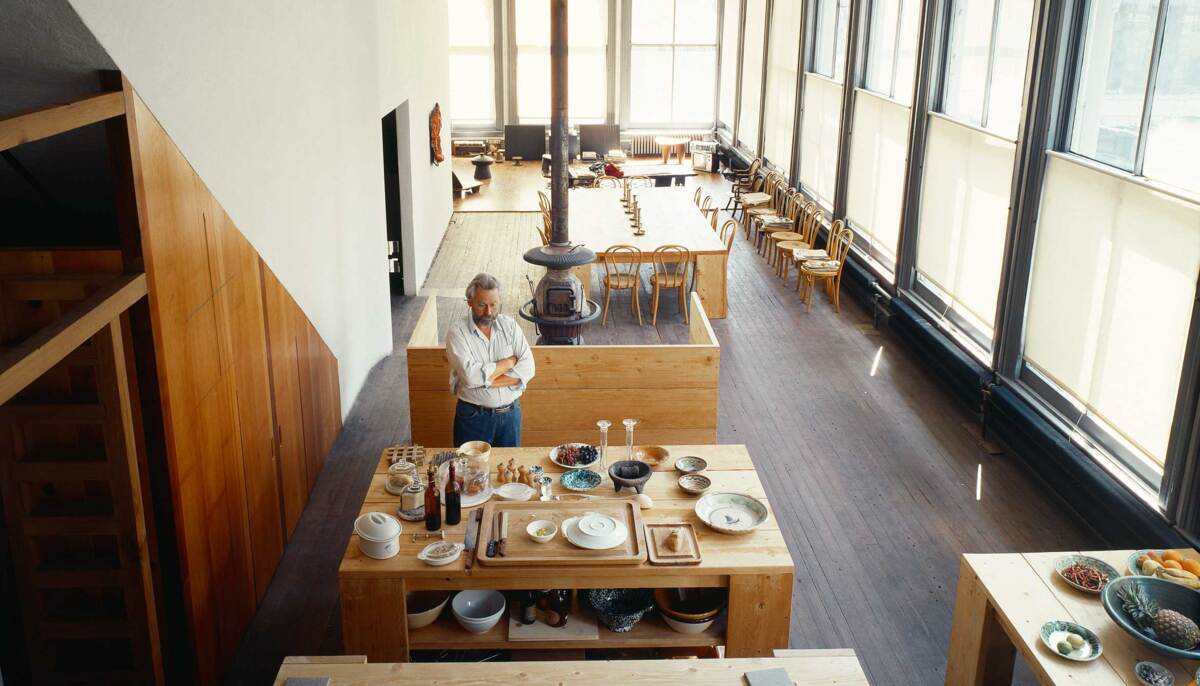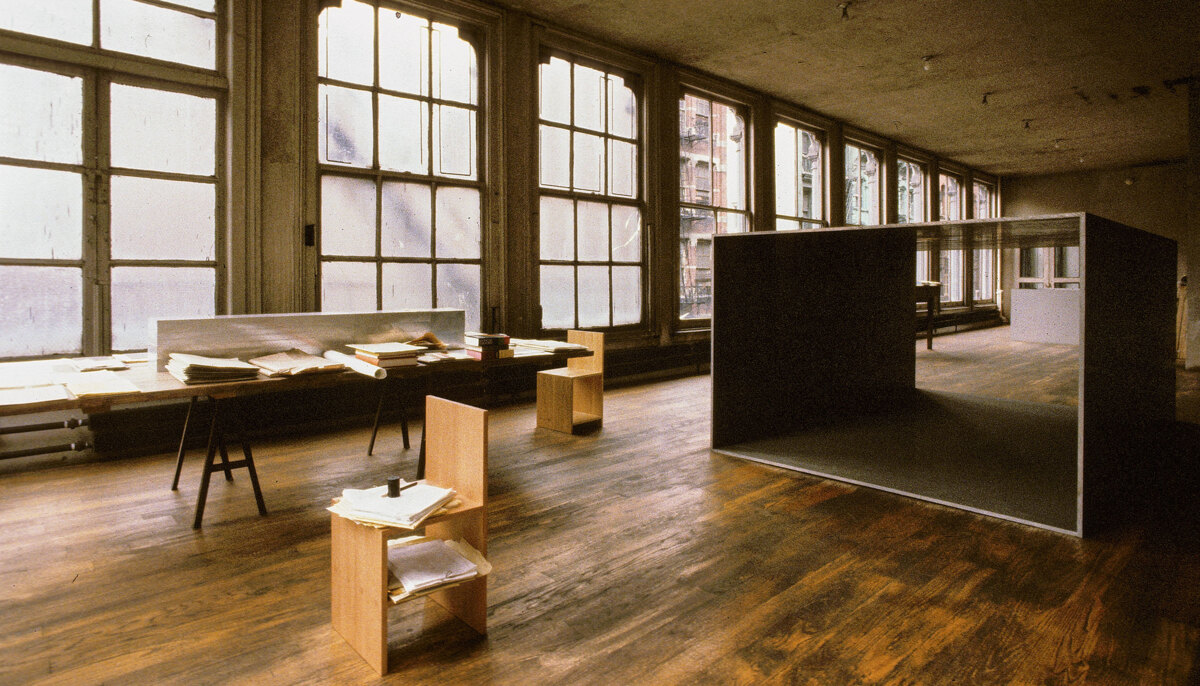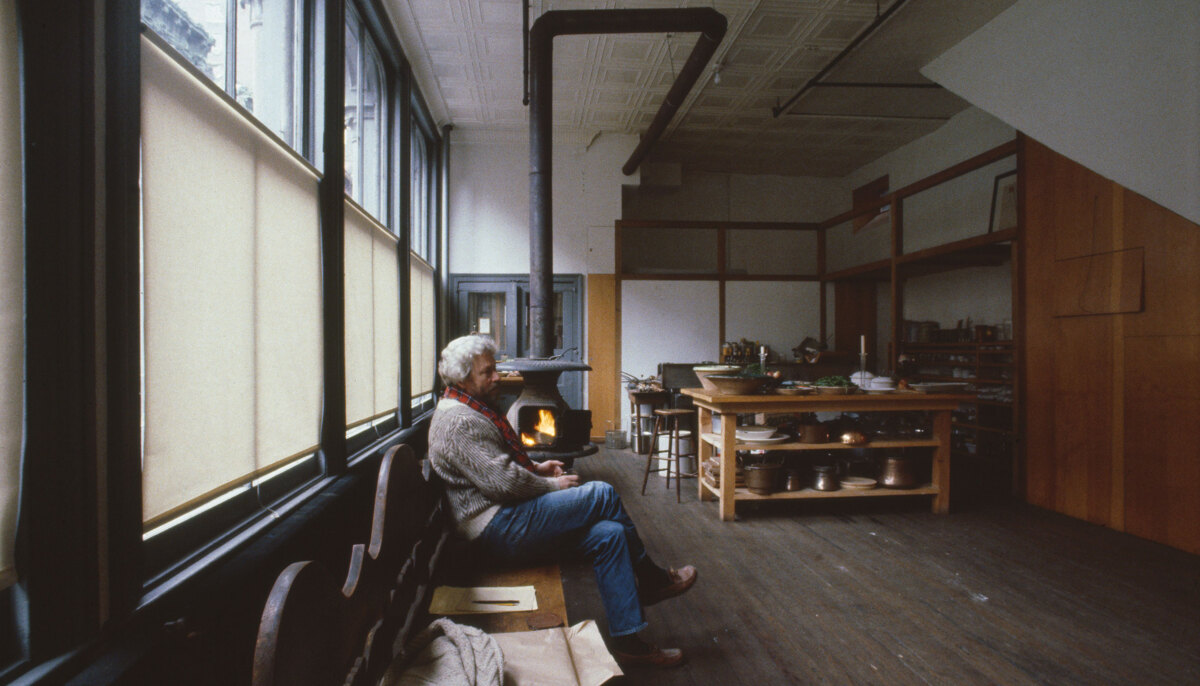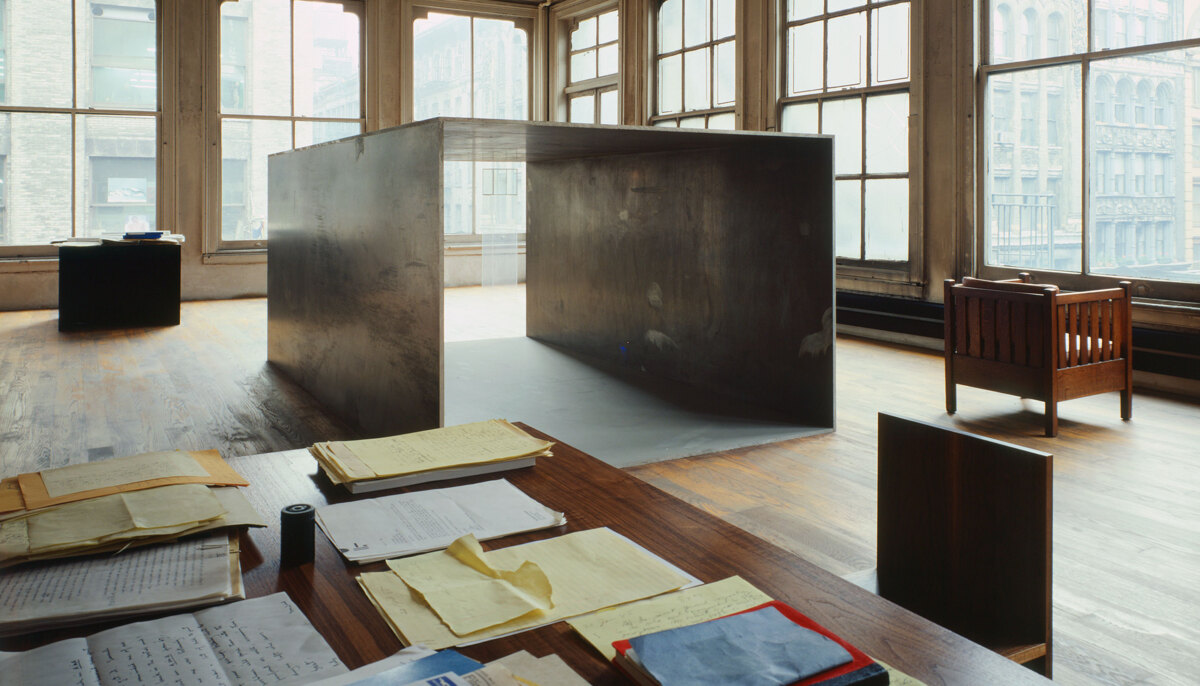Max Bill
Painter, sculptor, architect, product designer, graphic artist. Art theorist, lecturer, curator, publicist. Max Bill (1908-1994) was a universal talent of international importance and had a major influence on Lehni’s development.
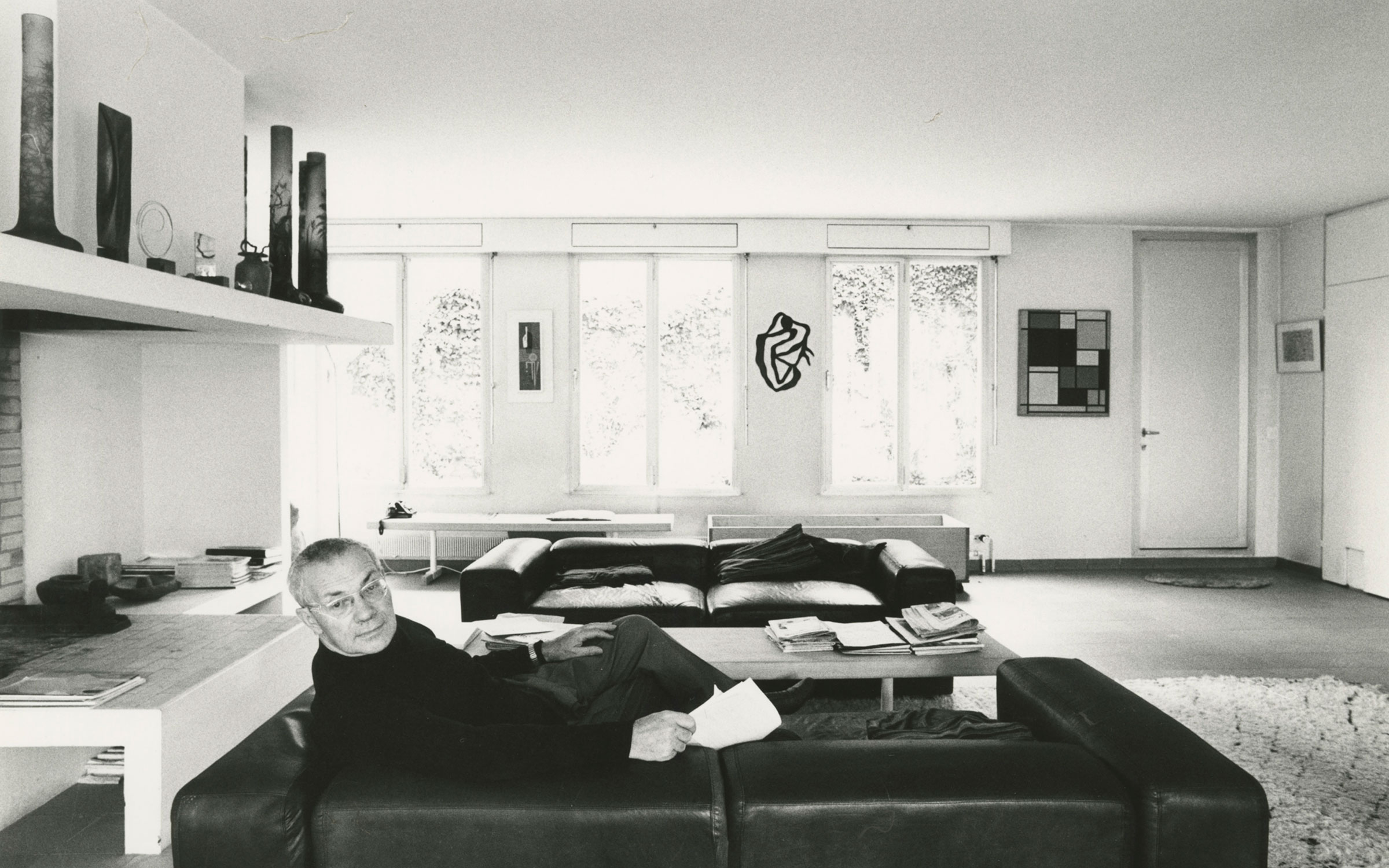
Born in Winterthur, Bill studied at the Bauhaus in Dessau in 1927/1928 with teachers such as Josef Albers, Wassily Kandinsky, and Paul Klee. Bill later played a major role in establishing the "concrete" approach; also, as a key figure in the Zürcher Konkrete (Zurich school of concrete artists), he made a significant contribution to the international reputation of Swiss art. Although Bill never designed products for Lehni, he played an important role in the company's development from sheet metal workshop to furniture manufacturer. Bill came into contact with Lehni early on in his career. In 1922 Rudolf Lehni senior (1885-1956), a craftsman interested in culture who had already cultivated contacts with the artistic avant-garde in Berlin during his travelling days, opened a sheet metal workshop not far from the Kunsthaus Zürich. Due to Lehni's understanding of design, the workshop soon became a meeting place for artists – including Max Bill, who had his "Wellrelief" made by Lehni in 1932. Today, this early pioneering work by Bill is viewed as particularly important since it anticipated American minimal art and Arte Povera. In the years that followed, Bill, whose influence extended far beyond the art world, became one of Switzerland's most well-known figures. (Image: Max Bill in his studio at Haus Bill in Zumikon. Photograph by Doris Lehni Quarella, 1984)
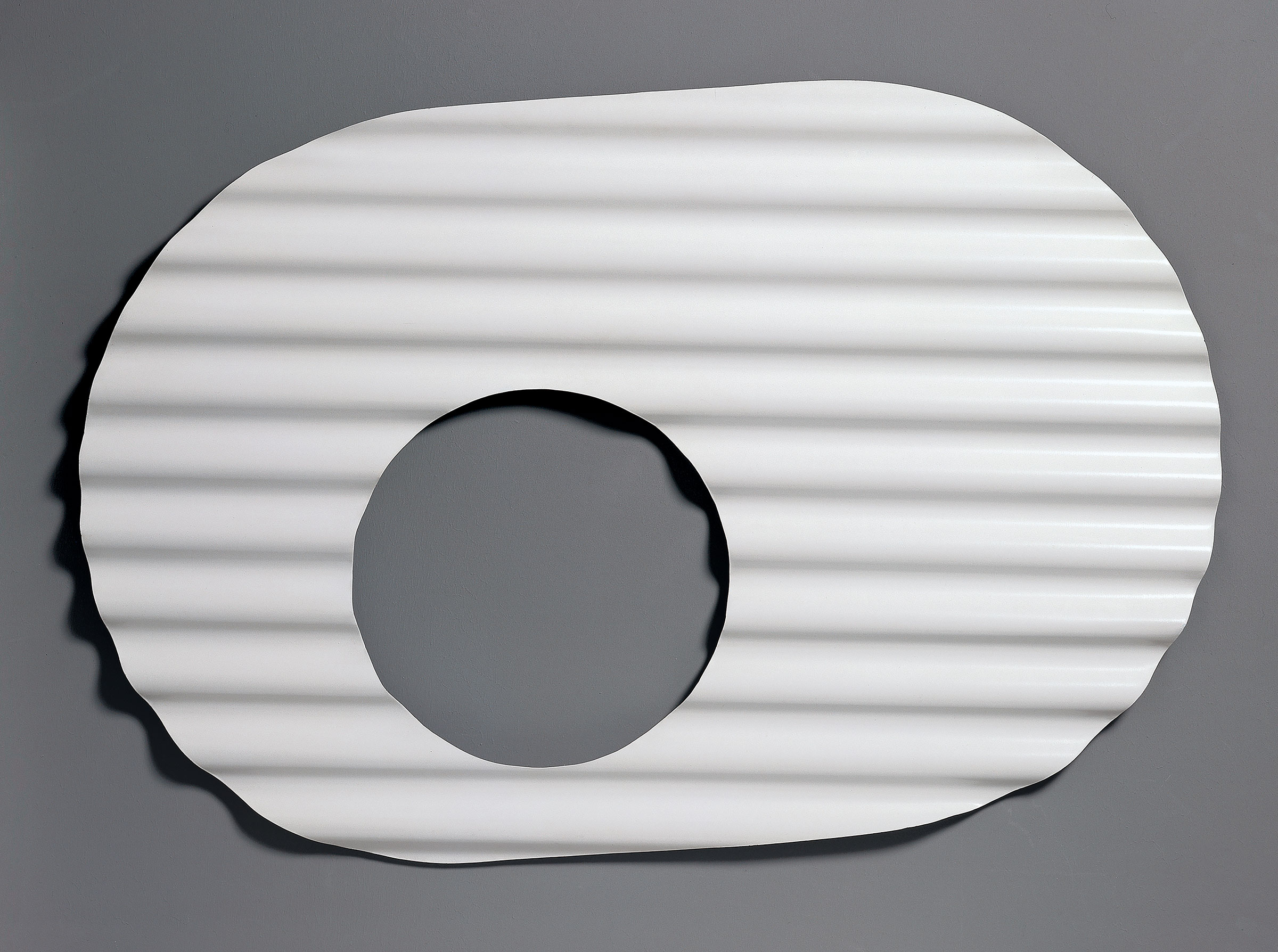
The deciding impetus behind Lehni becoming a furniture manufacturer came in the form of Andreas Christen's design for a universal shelf for the 1964 Expo (Swiss National Exhibition) in Lausanne. Max Bill was responsible for the "Art and Design" sector and had recommended that the young designer and artist Christen (he may have explicitly referred to the duo Christen/Lehni) develop a bookshelf to match the pavilion of the Swiss Booksellers and Publishers Association. Christen designed a shelf made from aluminium sheets that can be easily assembled and disassembled and is extremely stable yet lightweight. Rumour has it that shortly before the opening of the exhibition, Bill dispelled any doubts about the shelf's load-bearing capacity by climbing on one of the shelves without causing any damage. (Image: Max Bill 'Wellrelief', 1932)
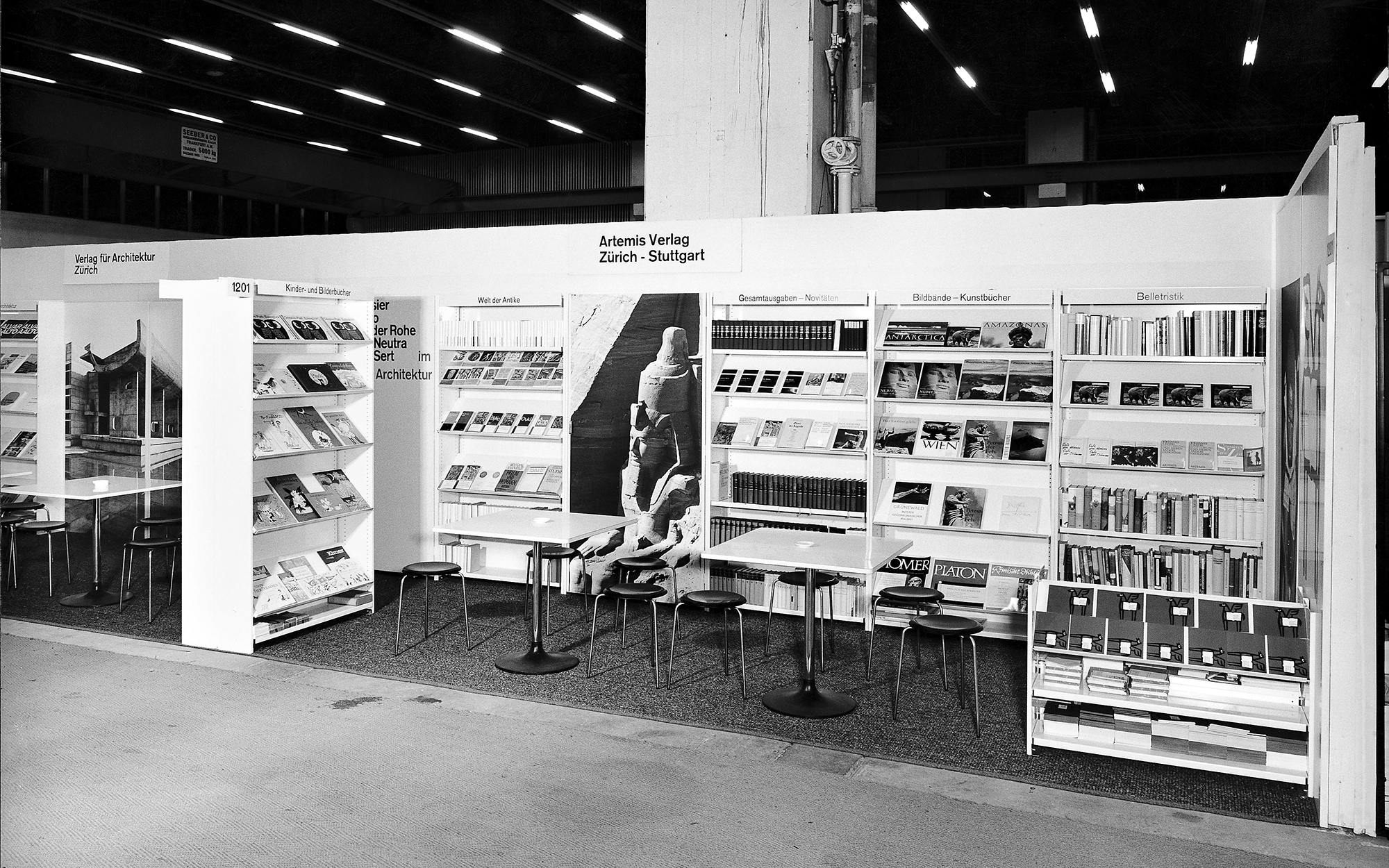
The choice of materials as well as the sophisticated design and economical production of the bookshelf caused a sensation. Lehni brought the shelf to market around 1970, and it is still being produced today. The success of the shelf prompted Rudolf Lehni junior, who had been running the company for several years, to transform his business from an all-round metalworking workshop into a metal furniture manufacturer. (Image: Swiss National Exhibition "Expo 64”in Lausanne, 1964)
Sol LeWitt
Sol LeWitt is one of the most important protagonists of Minimalism and a pioneer of conceptual art. In Switzerland in particular, where LeWitt also collaborated with Lehni on his works, the artist attracted a great deal of attention.
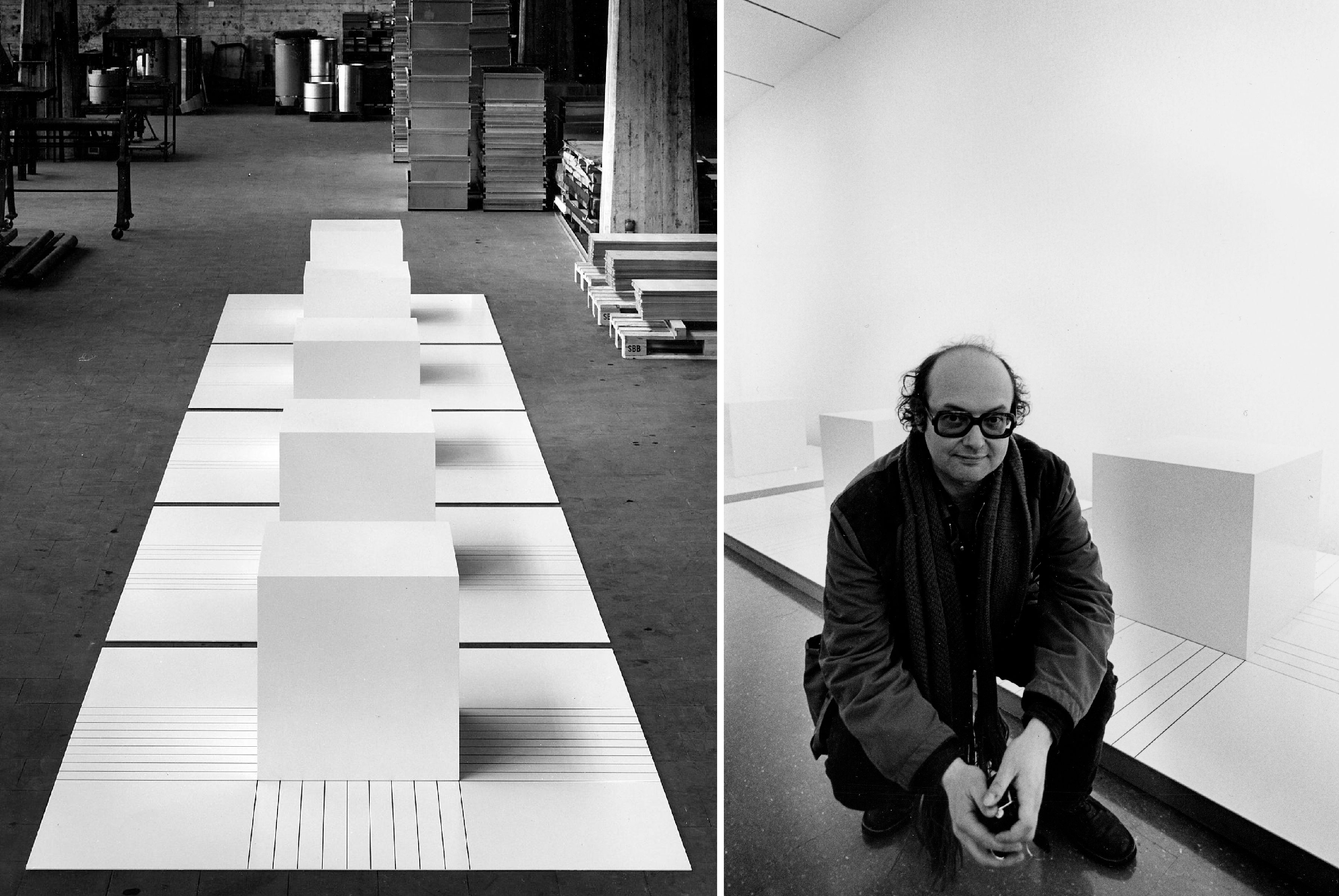
Many regard the American Sol LeWitt (1928–2007) not only as a pioneer, but also as the founder of minimal and conceptual art, which developed in New York in the 1960s. His affinity with the Zürcher Konkrete (Zurich school of concrete artists) was one of the reasons why LeWitt gained earlier recognition in Switzerland than in his home country. The Annemarie Verna Gallery in Zurich, one of the leading galleries for contemporary art in Switzerland, played an important role in this, and Sol Lewitt worked with the gallery for decades from 1975 onwards. In 1977, Sol LeWitt commissioned the gallery to produce four metal sculptures from the "Structures" series, which are now owned by private collectors. At the suggestion of Doris Lehni-Quarella, the works were manufactured by Lehni in Dübendorf. At the time, Lehni was already known for having a comprehensive understanding of art and producing high-quality work. (Image: The sculpture "Cubes with Hidden Cubes" in the Lehni factory building, Dübendorf, 1978 - Sol LeWitt portrayed by Doris Quarella, MOMA, New York, 1978)
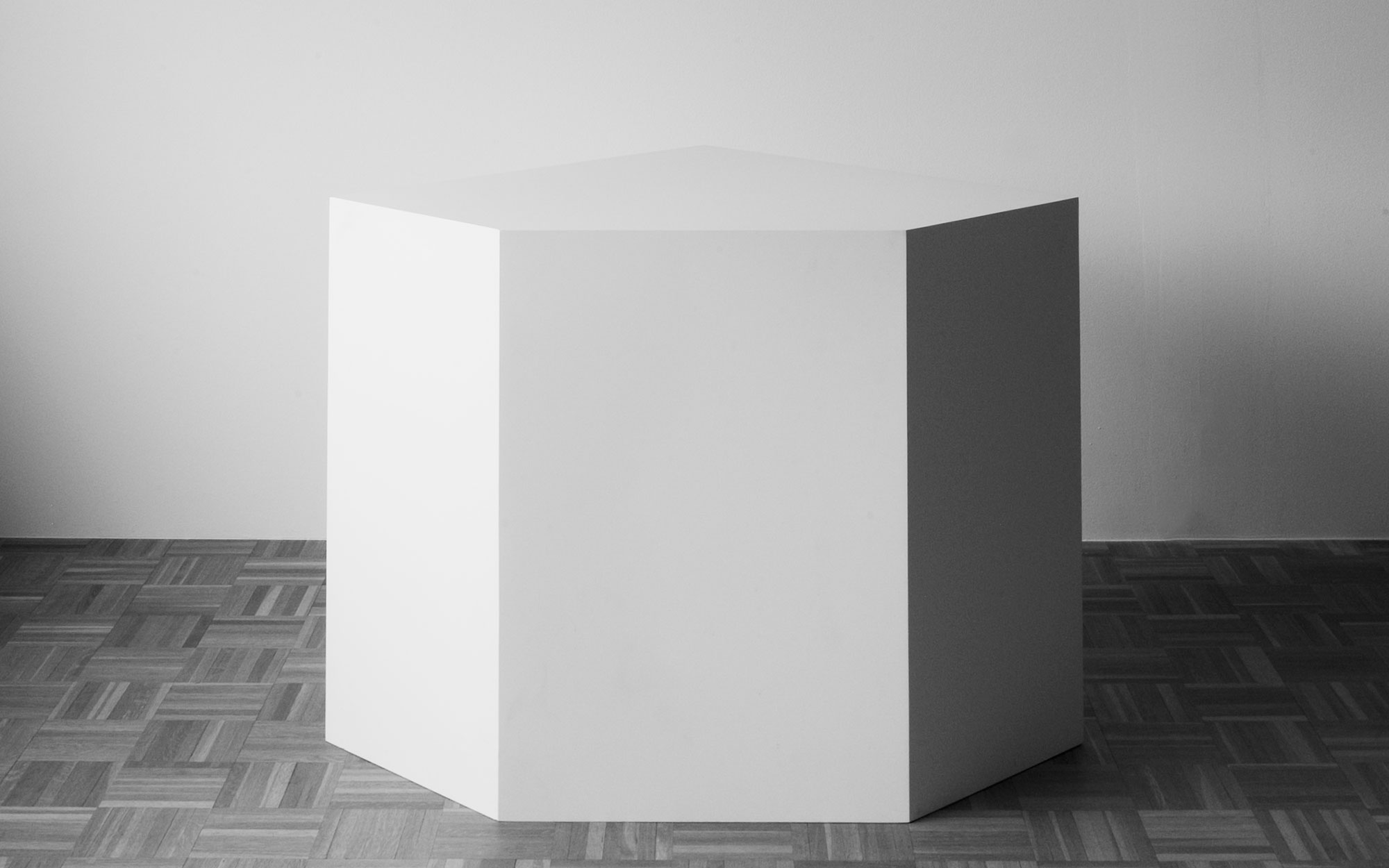
The following year, the Verna Gallery encouraged Sol LeWitt to collaborate on yet another artwork. The artist created the sculpture "Cubes with Hidden Cubes", which is now considered one of his three-dimensional masterpieces and was also produced by Lehni. The large-format work took up the entire space of the gallery's stand at Art Basel in 1978 and was sold during the fair. In the same year, this major work was loaned to the Museum of Modern Art in New York for the retrospective on Sol LeWitt and subsequently exhibited in the FER Collection in Karlsruhe. In 1985, Sol LeWitt again turned to the Vernas for the production of a metal series called "20 Forms Derived from a Cube". Once more, Lehni was entrusted with the execution. The works were exhibited at the art fairs in Basel and Madrid in the same year. (Image: Cube No. 5 from the series "20 forms derived from a cube", 1985)
Donald Judd
Donald Judd was one of the main representatives of American Minimalism. In 1984, Judd collaborated with Lehni to design a collection of 15 pieces of metal furniture that are still being manufactured by Lehni today.
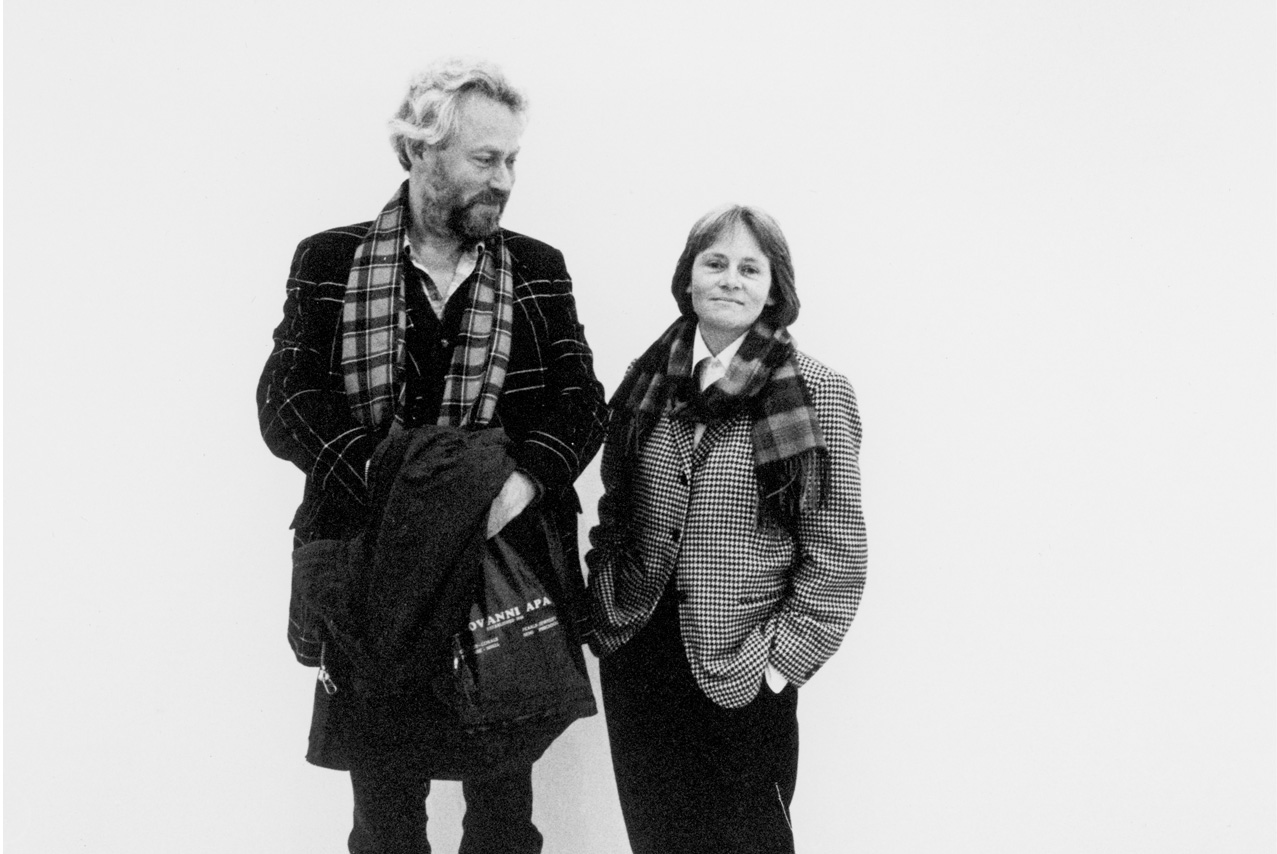
The connection between Donald Judd and Lehni has its origins in the close friendship between gallery owners Annemarie and Gianfranco Verna and Doris Lehni-Quarella (1944-1998). The trained photographer and wife of Rudolf Lehni junior (1923-1981) became the owner of Lehni after the death of her husband in 1981, and she continued to run the business until her untimely death in 1998. (Image: Donald Judd with Doris Lehni Quarella in 1983)
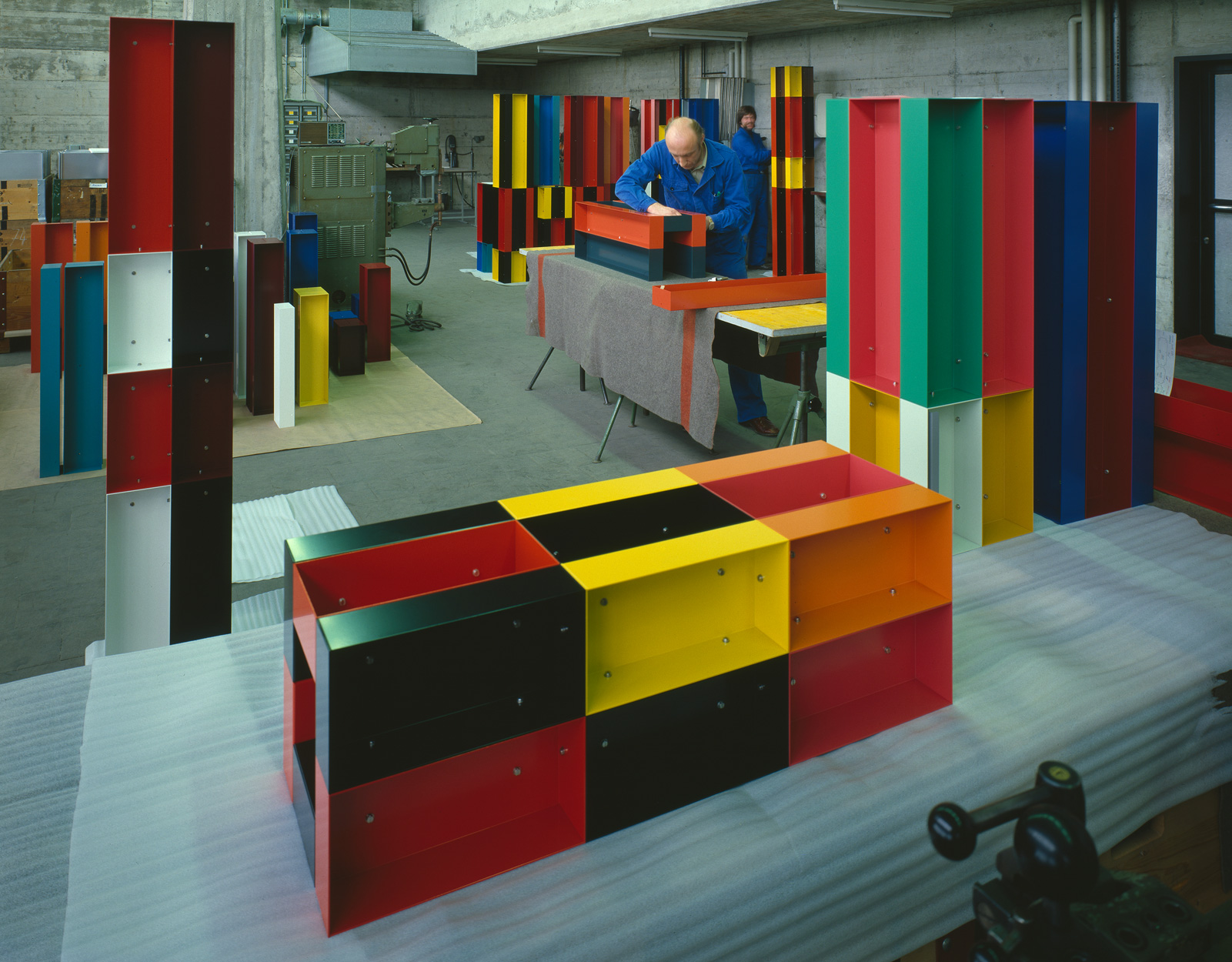
The story began at a meeting between Judd and curator Martin Schwander at the Annemarie Verna Gallery in Zurich. Schwander was preparing the exhibition "Sculpture in the 20th Century" for the summer of 1984 in Merian Park near Basel. Judd had agreed to realize a commissioned work for it. During the meeting, Judd noticed a bookshelf that stood opposite him – a Lehni shelf by Andreas Christen. He was impressed by the materialisation and construction. Judd was convinced that a large work could be produced in a similar manner, and he wanted to come up with a form and structure for that type of work. Annemarie Verna suggested Lehni as a potential manufacturing partner and made the introductions. (Image: Head technician Willi Bühler working on Judd's "multicolored works" in the Lehni manufactory. Dübendorf , 1984)
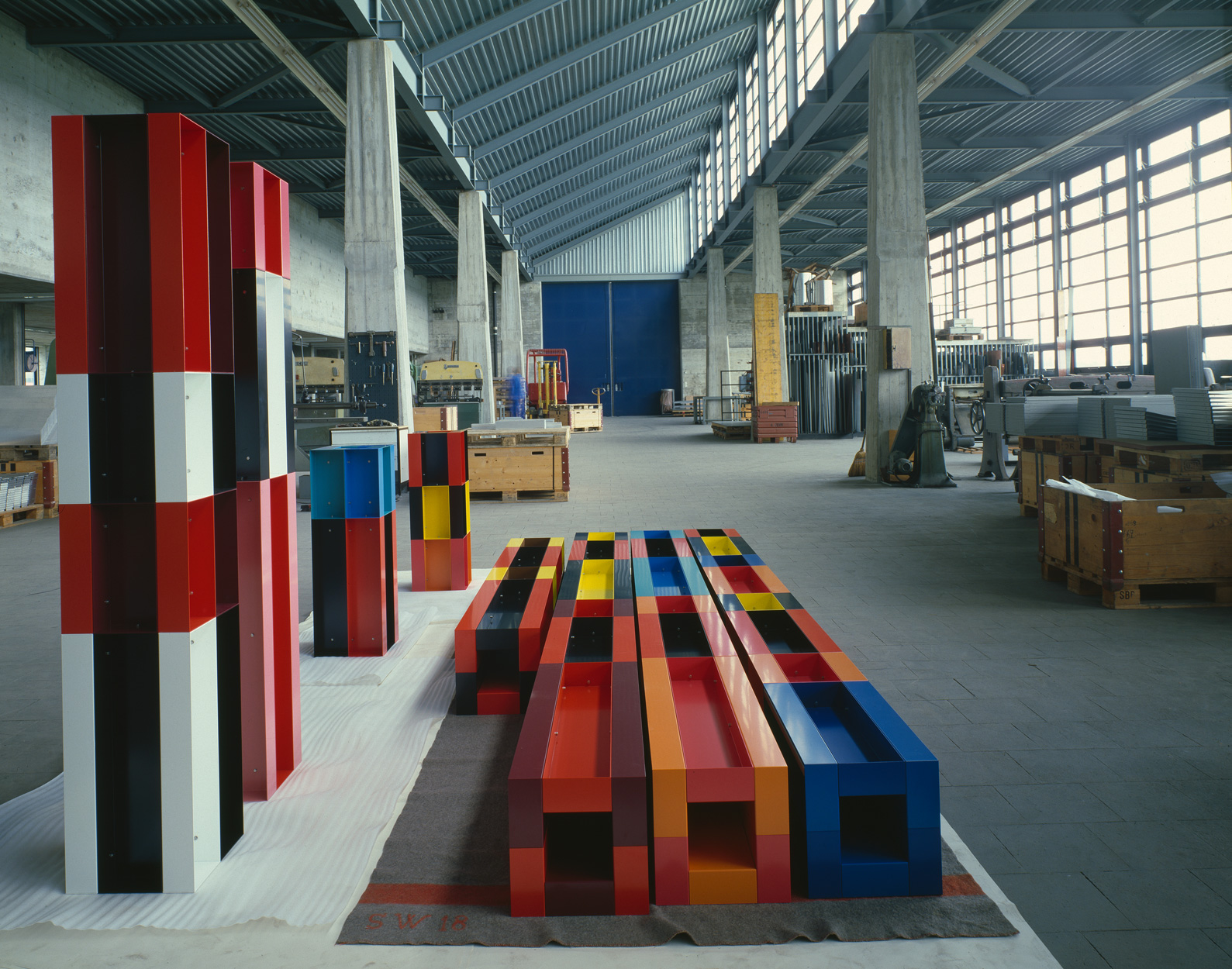
After his first visits to the workshop, Judd was impressed by the high level of craftsmanship and technical precision. Doris Lehni-Quarella set up a workplace for Judd in the manufacturing facility and Willi Bühler, their most skilled worker, was made available to him for a few days. Overnight, Donald Judd devised the factory structure planning required to constructively realize his artistic concept. (Image: "multicolored works" at Lehni. Dübendorf, 1984)
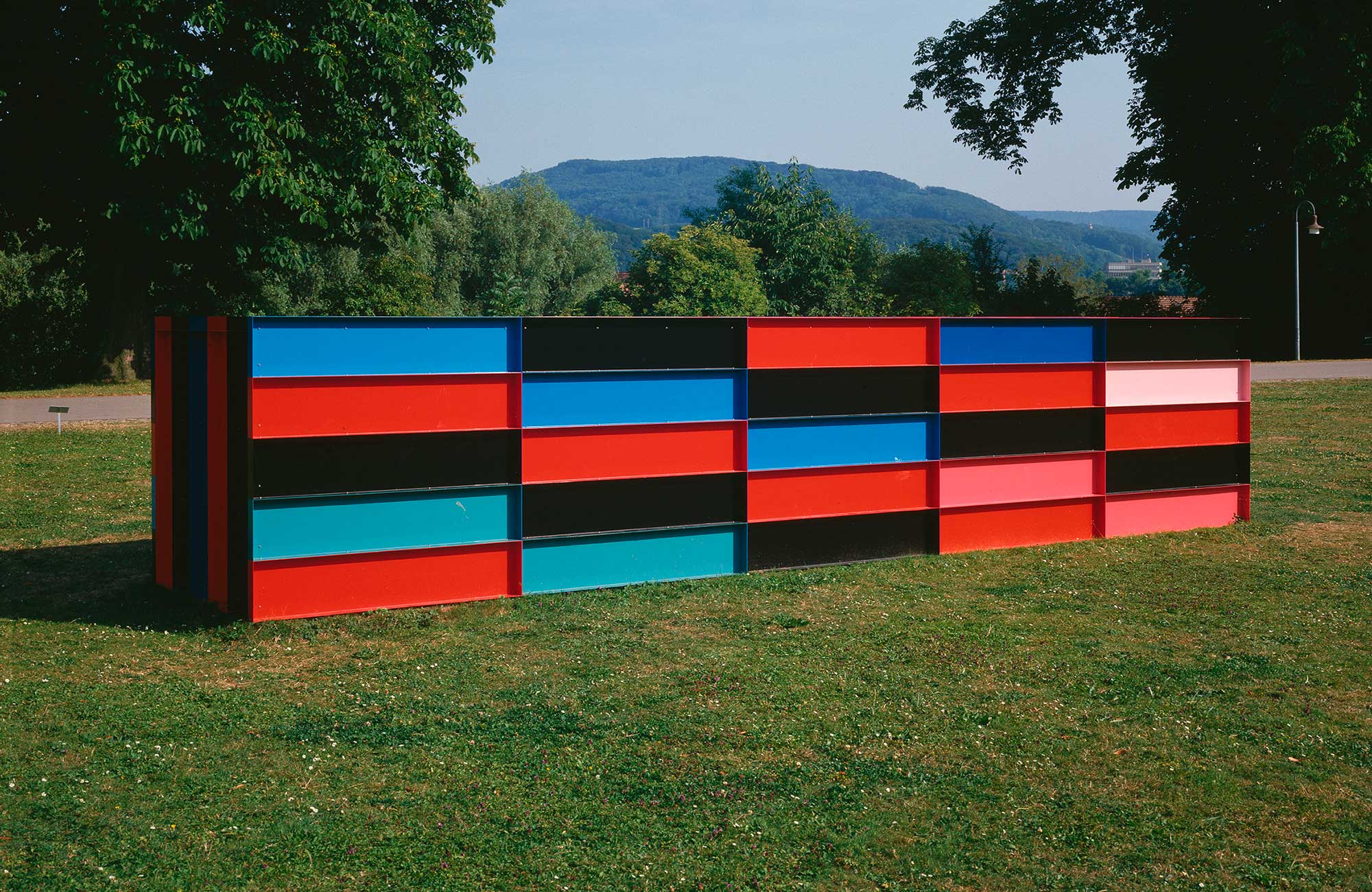
Exhibition "Sculpture in the 20th century" at Merian Park. Basel, 1984)

Donald Judd, preparatory drawing, 1984.

Multicolored 84-14: 101 Spring Street, New York, 1984.
The sculpture for the exhibition in Basel marks the beginning of a new colourism in the artist's work and was the first of Judd's "Multicolored Works": constellations of simple, coloured cubes and cuboids conceived as floor and wall pieces. They served as the basis for the Judd’s other "Multicolored Works", which were mostly developed from 1984-86 and manufactured by Lehni.
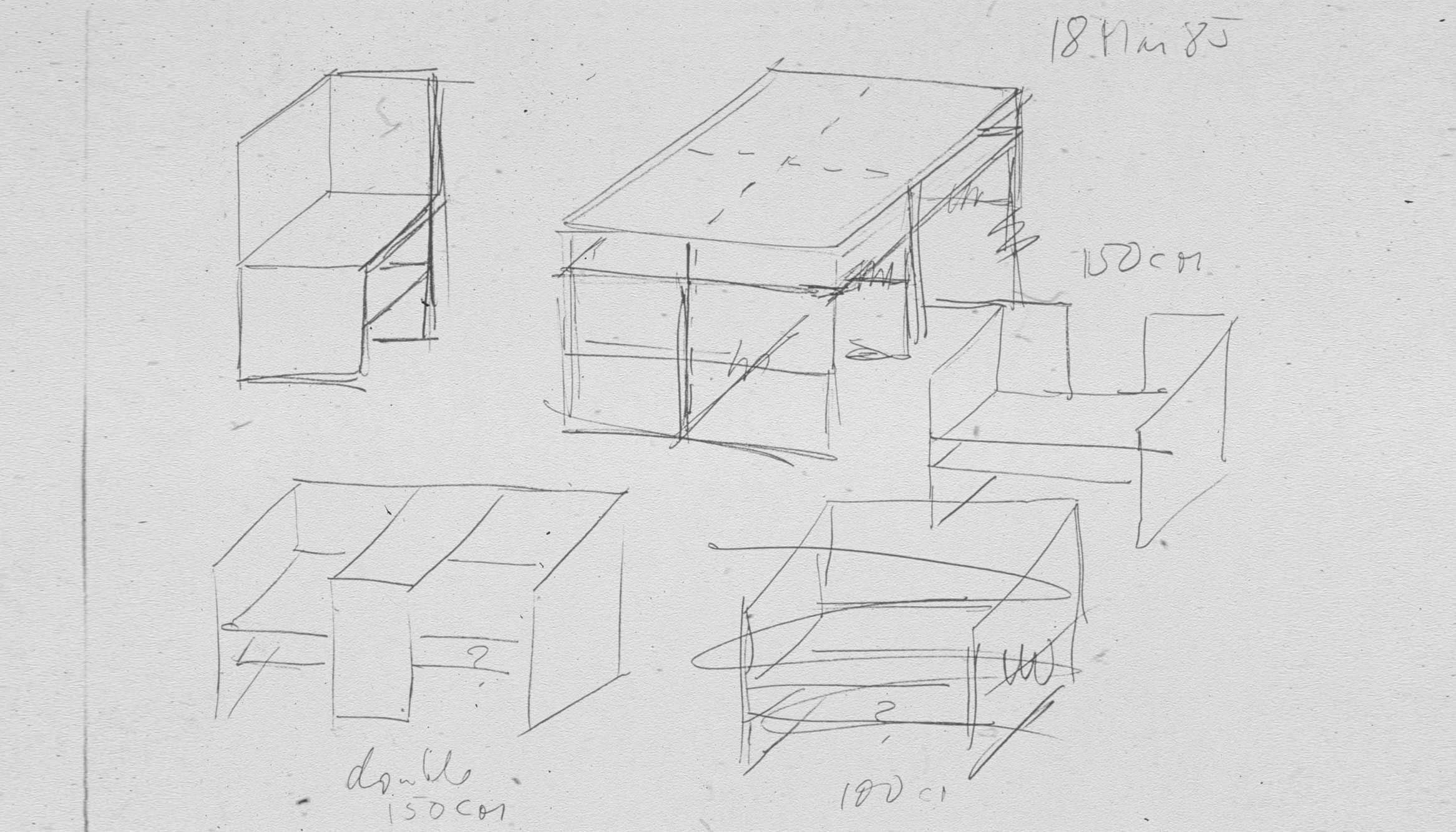
The collaboration led to the plan to create a furniture collection inspired by the "Multicolored Works". Based on the construction principle (Lehni bending technology) and the use of colour in the "Multicolored Works", Donald Judd began designing pieces of furniture in metal that were formally related to his works made of wood. The first models were exhibited at the Max Protetch Gallery in New York in December 1984 and at the Annemarie Verna Gallery in Zurich in February 1985. In the end, the collection comprised 15 objects made of monochrome, powder-coated aluminium in 15 colours.
In recent years, the collection has been gently developed further by the Judd Foundation in collaboration with Lehni: It has been expanded to include additional RAL colours and the material variants copper and brass. Today, Lehni is still the only company in the world to manufacture the entire Judd metal furniture collection. (Image: Donald Judd, preparatory drawing for furniture, 1985)
Donald Judd about Lehni
“The level of craftsmanship is very high, which is rare; industrial technology that does not require warranty declarations.”
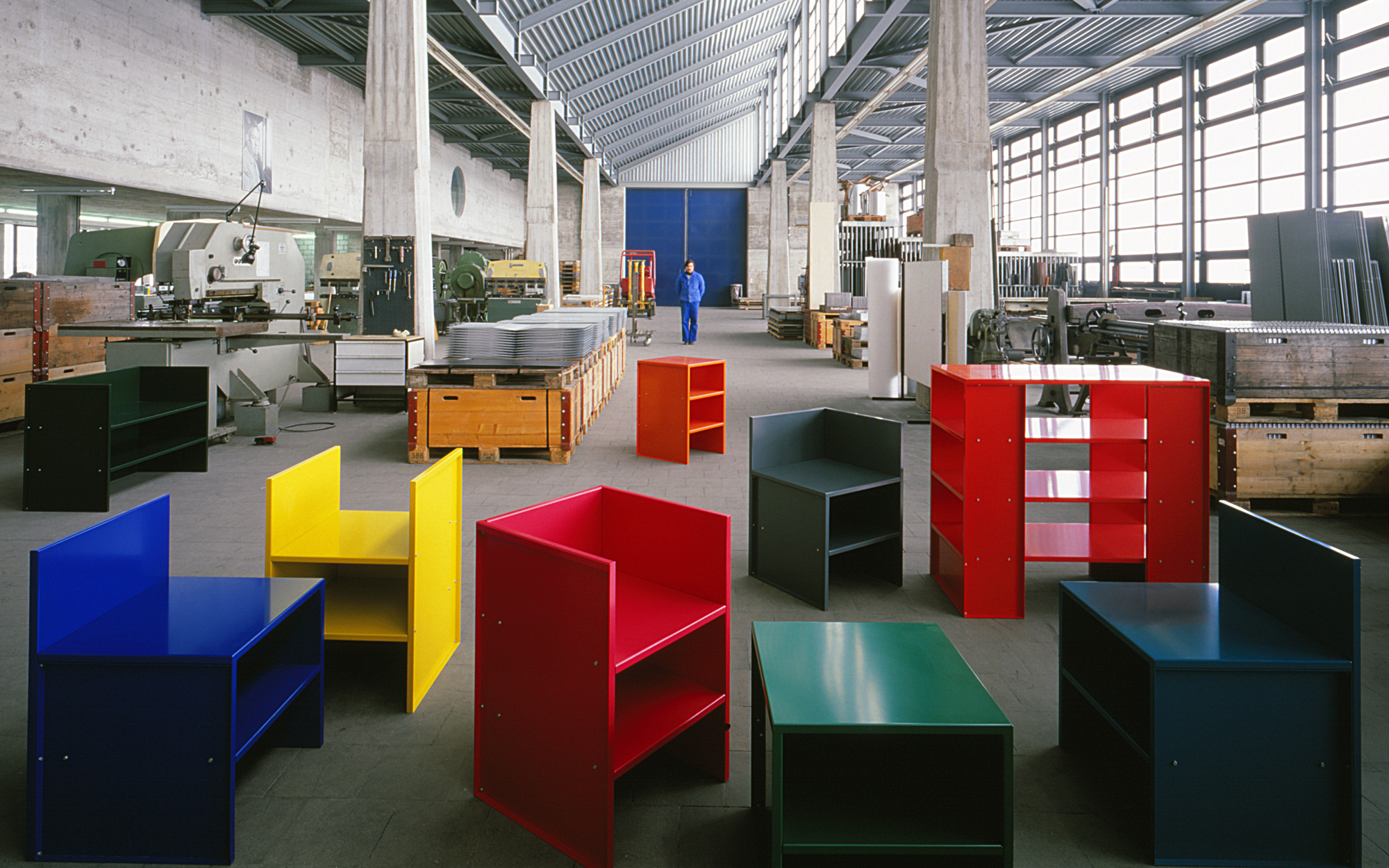
It was important to Judd that no irregularity disturbed the perception of the forms. To achieve this, each piece of furniture is largely made by hand. For each order received, exactly one piece of furniture is produced. (Image: The first Lehni-Judd furniture collection in the factory building in Dübendorf, 1985)
From the Lehni archive: From Marfa to New York
Photo by Doris Quarella, 1984
Andreas Christen
Andreas Christen (1936-2006) was a Swiss designer and visual artist of great significance. Christen worked with Lehni for over 40 years and was their most important designer. His significance for Lehni goes far beyond that of an ordinary product designer.
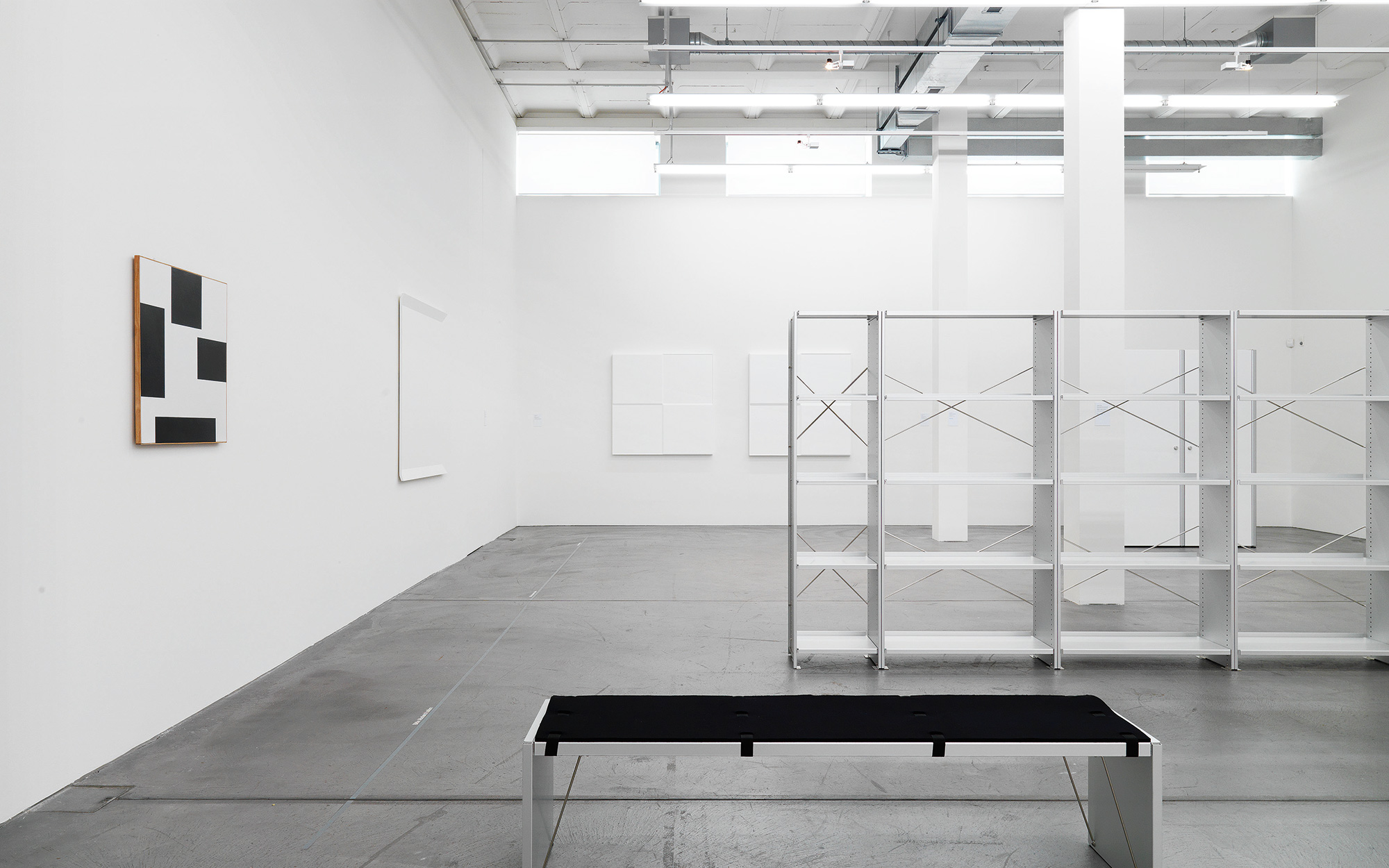
Christen consistently separated his work as an artist from his work as a designer. However, the design, manufacturing process and his keen sense of material aesthetics are strongly present in both his product design and his art, as is his exemplary and precise way of constructing something and reducing it to the essentials. (Exhibition on the work of Andreas Christen at the Museum Haus Konstruktiv, Zurich, 2008)
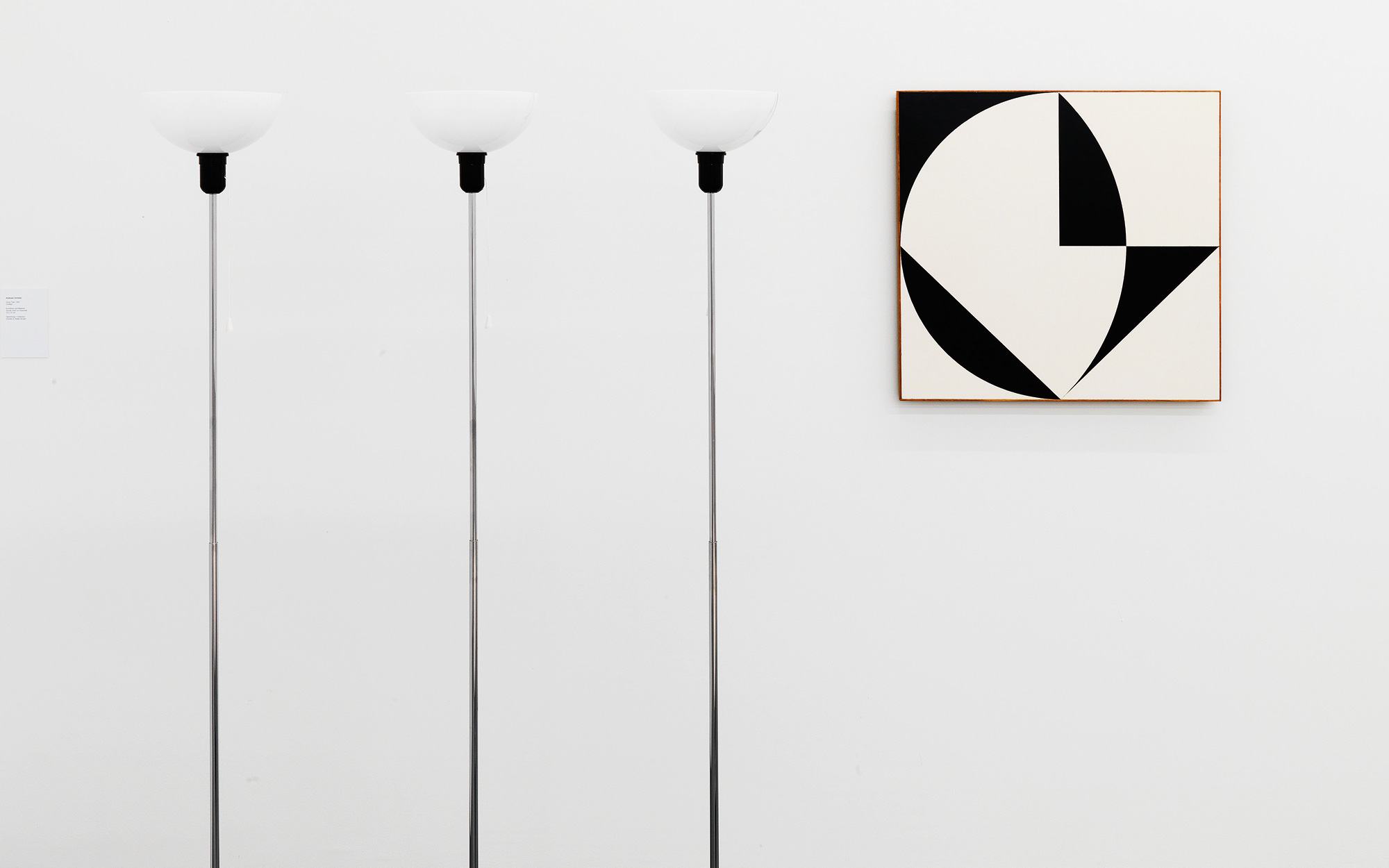
As a young artist, Christen enjoyed the support of Max Bill. He was one of the youngest people to be invited to Bill's epochal exhibition " konkrete kunst: 50 jahre entwicklung» (concrete art: 50 years of development) at the Helmhaus in Zurich. In the sixties and seventies, Christen's work was mostly associated with the Zürcher Konkrete.
Rudolf Lehni junior and Andreas Christen probably first met at the Kunstgewerbeschule (School of Arts) in Zurich, where Lehni taught materials science and metalworking. From 1956 to 1959, Christen was the only student at the school to complete the experimental class for product form under Bauhaus graduate Hans Fischli. (Image: Andreas Christen, Museum Haus Konstruktiv, Zürich 2008)
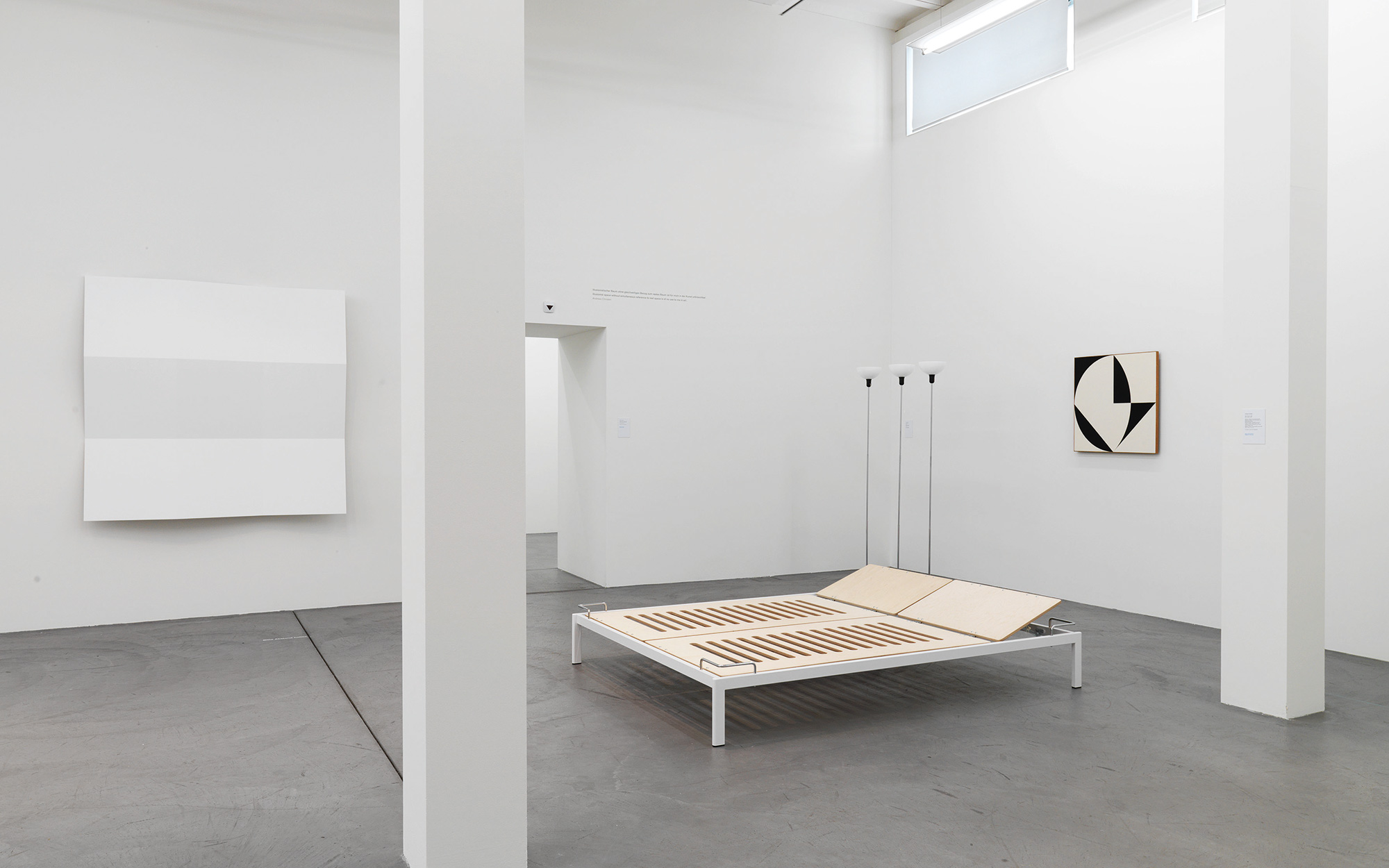
It was the beginning of a uniquely permanent collaboration. Christen and Lehni continued to share a common interest in sophisticated detailing and the creative mastery of seemingly unimportant nuances. After the untimely death of Rudolf Lehni junior in 1981, his wife Doris Lehni-Quarella took on the management of the company. Together with Andreas Christen, she continued to further develop the furniture product range.
Christen's designs are characterised by clear forms, simple elegance, a sophisticated functionality, and the economical use of materials. Many of his pieces are now classics of furniture design. (Image: Andreas Christen, Museum Haus Konstruktiv, Zürich 2008)
Zilla Leutenegger
Zilla Leutenegger (*1968 in Zurich) is an outstanding contemporary Swiss artist. Lehni's Screen also plays a role in her work.
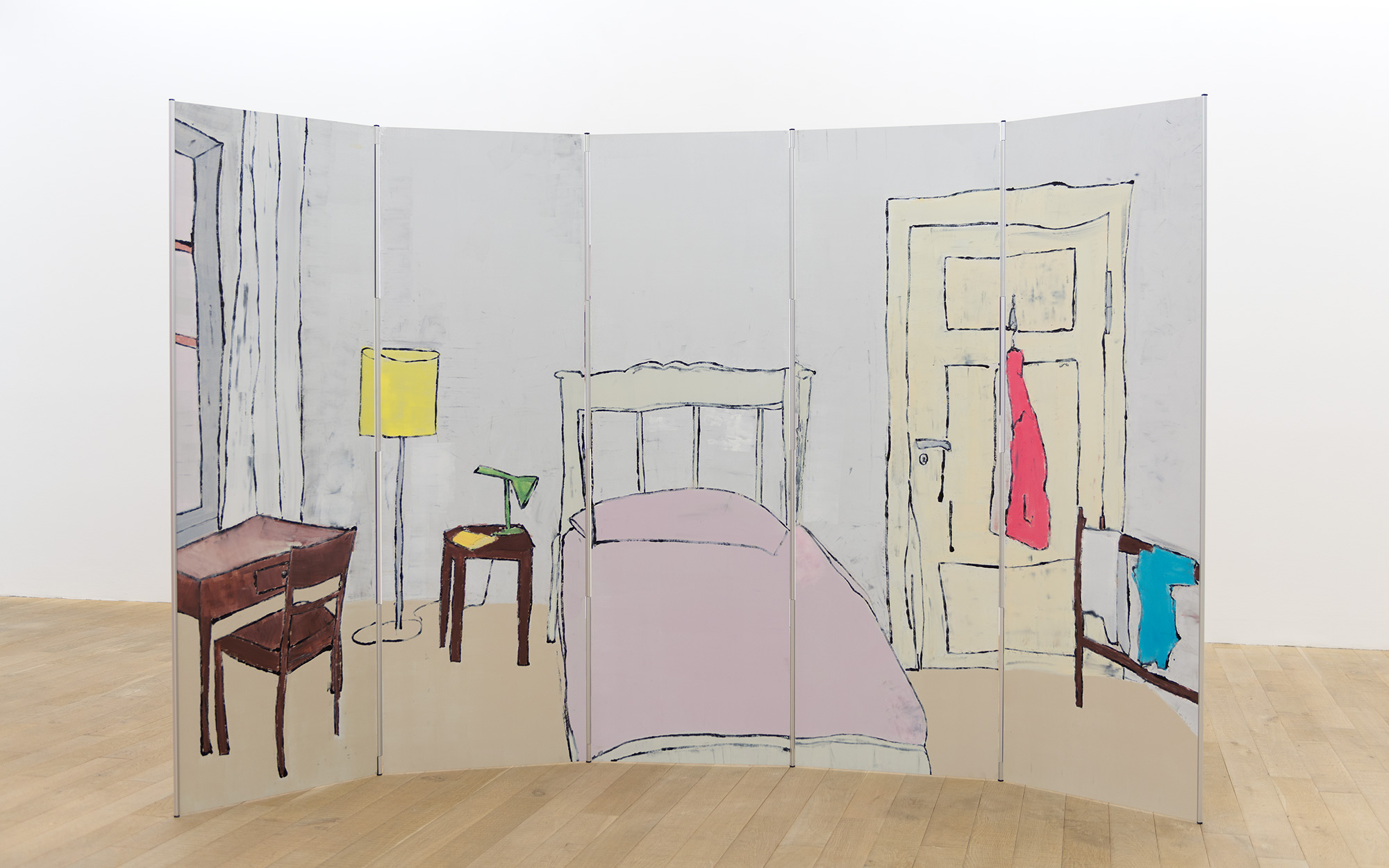
Zilla Leutenegger is best known for her characteristic drawing style, which consists of clear, bold strokes and strong colour accents. Her works have been exhibited nationally and internationally in renowned art institutions and at biennials since 1996. Leutenegger defines herself as an illustrator, regardless of the medium she works in. The artist routinely works with different media. With her video drawings, which combine drawing and video, she creates multimedia spatial installations in which physical objects meet projections, shadows, wall drawings, and sound. (Image: “Celine’s room”, Monotype on 5-part screen / oil on aluminium 180 x 250 cm. Unique piece, 2017)
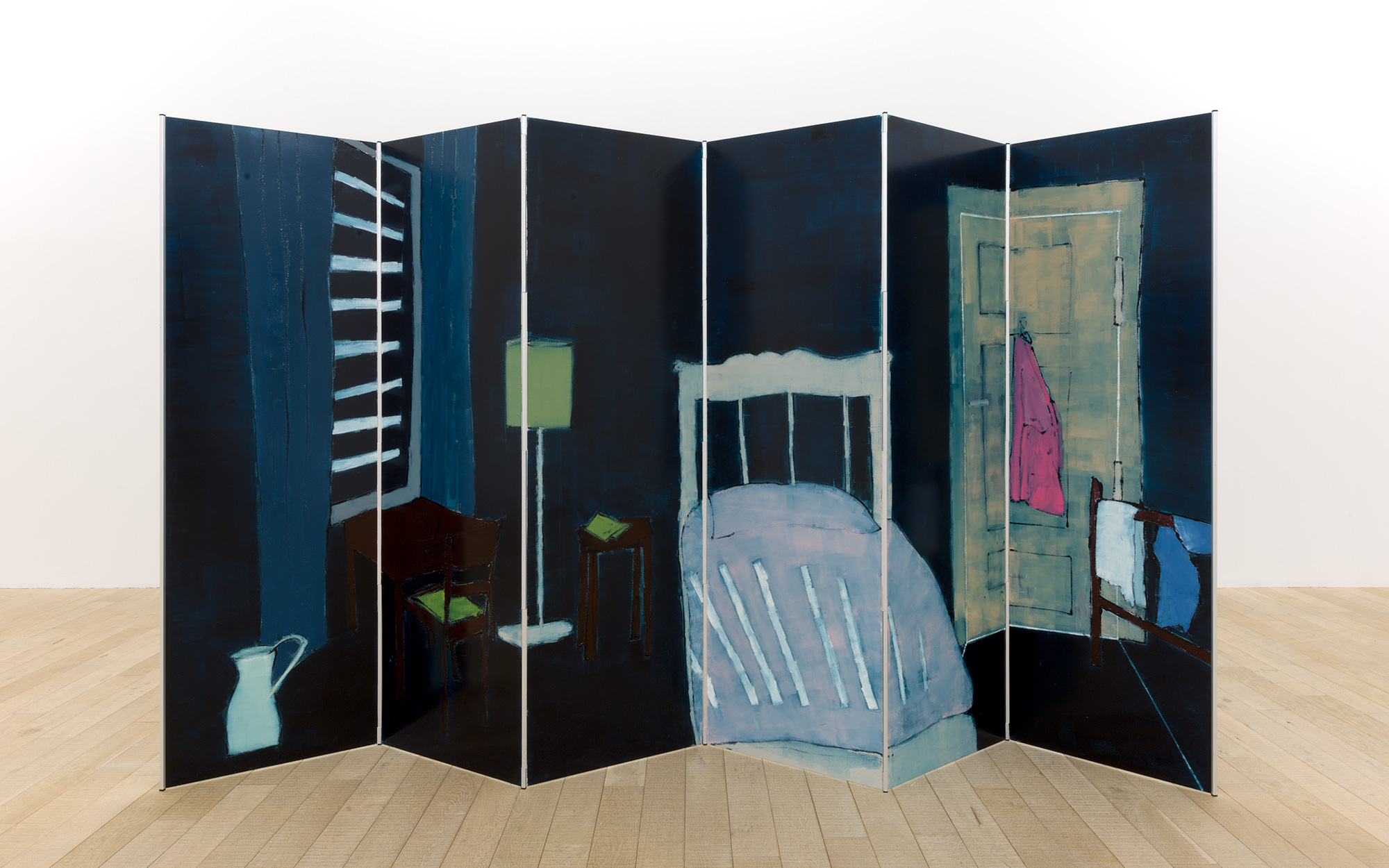
Since 2016, the artist has worked with monotype, a technique in which a single unique print is created by combining a drawing with paint. By using screens for the prints, her drawings become three-dimensional. Zilla Leutenegger has repeatedly used the Lehni Screen as a basis for her art. In recent years, she has created various large-format monotypes in collaboration with Lehni. (Image: “La notte”, 2018. Monotype on 6-part screen / oil on aluminium 180 × 300 cm. Unique piece, 2018)


